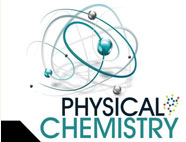


 علم الكيمياء
علم الكيمياء 
 الكيمياء التحليلية
الكيمياء التحليلية 
 الكيمياء الحياتية
الكيمياء الحياتية 
 الكيمياء العضوية
الكيمياء العضوية 
 الكيمياء الفيزيائية
الكيمياء الفيزيائية
 الكيمياء اللاعضوية
الكيمياء اللاعضوية 
 مواضيع اخرى في الكيمياء
مواضيع اخرى في الكيمياء
 الكيمياء الصناعية
الكيمياء الصناعية |
أقرأ أيضاً
التاريخ: 2024-01-22
التاريخ: 2024-04-22
التاريخ: 9-9-2020
التاريخ: 31-10-2016
|
Most molecules are at peace with themselves. Bottles of sulfuric acid, sodium hydroxide, water, or acetone can be safely stored in a laboratory cupboard for years without any change in the chemical composition of the molecules inside. Yet if these compounds are mixed, chemical reactions, in some cases vigorous ones, will occur. This chapter is an introduction to the behavior of organic molecules: why some react together and some don’t, and how to understand reactivity in terms of charges, orbitals, and the movement of electrons. We shall also be introducing a device for representing the detailed movement of electrons—the mechanism of the reaction—called the curly arrow. To understand organic chemistry, you need to be fluent in two languages. The fi rst is the language of structure: of atoms, bonds, and orbitals. This language was the concern of the last three chapters: in Chapter 2 we looked at how to draw structures, in Chapter 3 how to f i nd out what those structures are, and in Chapter 4 how to explain structure using electrons in orbitals. But now we need to take up a second language: that of reactivity. Chemistry is fi rst and foremost about the dynamic features of molecules—how to create new molecules from old ones, for example. To understand this, we need new terminology and tools for explaining, predicting, and talking about reactions. Molecules react because they move. Atoms have (limited) movement within molecules— you saw in Chapter 3 how the stretching and bending of bonds can be detected by infrared spectroscopy, and we explained in Chapter 4 how the σ bonds of alkanes (but not the π bonds of alkenes) rotate freely. On top of that, in a liquid or a gas whole molecules move around continuously. They bump into each other, into the walls of the container, maybe into solvent in a solution. It is all this incessant motion which drives reactions, and we fi rst need to look at what happens when molecules collide.



|
|
|
|
دراسة: حفنة من الجوز يوميا تحميك من سرطان القولون
|
|
|
|
|
|
|
تنشيط أول مفاعل ملح منصهر يستعمل الثوريوم في العالم.. سباق "الأرنب والسلحفاة"
|
|
|
|
|
|
|
المجمع العلمي يقيم دورة تطويرية عن أساليب التدريس ويختتم أخرى تخص أحكام التلاوة
|
|
|